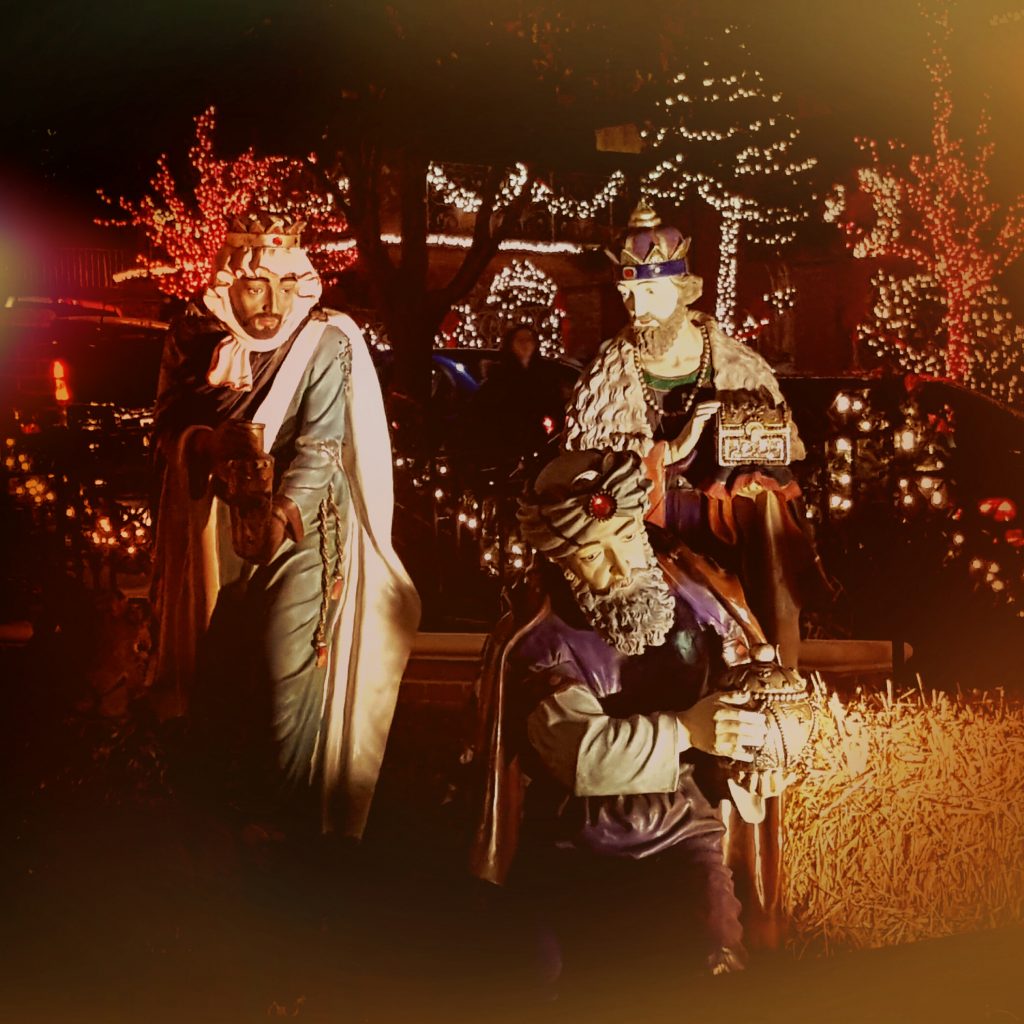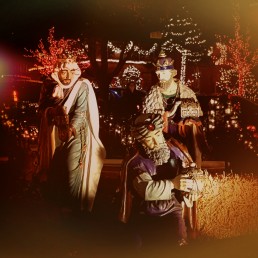Announcing...
The arrival of the folkböcker to Scandinavia in the mid-seventeenth century not only spread magical knowledge and techniques of practices from the Continent, they began to change the way that traditional Scandinavian folk sorcery itself was transmitted, organised, and studied. Such material had previously been almost exclusively orally transmitted, until klokfolk (‘wise ones’) increasingly began writing their instructions, incantations and formularies down in collected books. Some of these collections of recipes, lore, spells, and charms began to be called svartkonstböcker – literally ‘books of the black arts’. In the popular consciousness of the English-speaking world, hardly anything is known about them.
As one of the creators and editors of Revelore Press’ Folk Necromancy in Transmission series, it is both my responsibility and my considerable excitement to announce our forthcoming publication of Dr Thomas K. Johnson’s Svartkonstböcker: A Compendium of the Swedish Black Arts Book Tradition. Based on Dr Johnson’s doctoral thesis, this voluminous work of reference and analysis is not only the most comprehensive work on svartkonstböcker to date, it is also a commemorative offering being published posthumously in honour of the author’s achievements.
And these achievements are worth going over. In addition to providing complete archive records and translations, this tome contains full English translations of no less than thirty-five manuscripts: the largest corpus of Swedish ‘Black Art’ books ever assembled in one study.
Through such detailed analysis of actual primary source manuscripts, Johnson offers vital perspective on both procedural traits and functional intents of the magical operations contained therein. The accompanying detailed commentary ensures such translations can also be of use and interest to an international academic readership. By providing and contextualising these exhaustive source materials, Dr. Johnson has made conclusions that have not previously been possible. He draws attention, for instance, to the points where oral narratives of folk belief about the books deviate from what is represented by the books themselves. As such, this work is able to present the Swedish black art book in richer, more heterogenous detail than ever before.
Rather than simply throwing the reader into a deep end of academia, Johnson carefully introduces the relevant Swedish terminology, leading readers through to a study of the compilers and owners of such black books (the klokfolk) based once more in unedited archival materials. From here he explores folk beliefs about the magic of the black books themselves, before providing detailed notes on each of the manuscripts and their translations.
While Dr. Johnson hoped this volume would afford no small amount of pleasure in the reading, he also hoped that the scholar will find in it a reliable source of Swedish folk narrative in both the original Swedish as well as in English translation, and that the translations of the manuscripts will serve in the future study of international traditions of charms, charming, and folk grimoires. As his widower, Willow communicated to us, ‘Tom was concerned about all these source materials literally rotting in libraries and peoples’ homes. He wanted to do justice to the legacy of his ancestors.’ We are honoured to be a part of this ongoing wish.
What personally excites about this compendium are the veins of Cyprianic magic to be explored in the Swedish ‘black art’ books. As explored in Cypriana: Old World, our first Folk Necromancy in Transmission anthology, legends of Saint Cyprian and his own book(s) of black magic traveled widely across Europe, and represent a fascinating nexus of Christian and pagan practices, not to mention some fairly expressly necromantic formulary. Permit me one brief foray into the kind of material we are talking about.
One manuscript in our upcoming publication (MS 12 NM 40.034) contains the Cypranis Konster och liiror och des inrat (‘The Arts and Teachings of St. Cyprian and its equipment’), which presents an operation to break an enchantment through a ritual enacting of death that takes a particularly blunt but unthreatening manner:
A person who is enchanted should go on a Sunday morning on an empty stomach and silently under an [abul], cut up a turf and put it on his head, and then go three times around the [apulen] and say these words: ‘If I am enchanted and must wait until I go into the earth, then now I have earth both under me and above me and await healing now, in the name of the Father and the Son and the Holy Ghost’. Recite that three times and put the turf in its place again and go home again, and don’t look back.
Other operations include conjurations of Elemental Kings, at least one operation ‘to perceive if the butter has been bewitched’, instructions in the proper preparation of a divining rod, how to use a cat’s skull in a magical working ‘to have female companionship at night’, and many, many more works of protection, cursing, exorcism, and healing.
Since Revelore Press formally acquired the rights to Dr Johnson’s thesis, we have wanted to release an edition that honours both the ‘black art’ book tradition and Thomas’ considerable contribution to this field. We wish to make this substantial reference work into a beautifully typeset book that stands – in both limited-edition hardback and trade paperback – proudly on the shelf.

Most importantly, however, we feel it essential that this publication honour the wishes of Dr Johnson himself, as well as his nearest and dearest surviving family. As such, we are working closely with his widower (depicted left, at their wedding) to ensure this posthumous celebration of this work is something that not only transmits but expands Thomas’ love and care for his field, that can be guide to this area for others to explore, and an invaluable resource in understanding the particular terroir of this Swedish folk magical book tradition.
Pre-order will open at the Summer Solstice.
Happy Epiphany, 2018
Happy Epiphany, dear reader.
 The sixth day of January has been associated with a variety of significant events in various Christian calendars – the original date of the Christ-child's birth, the baptism of an adult Jesus by John the Baptist in the Jordan, the miracle of the water into wine during the marriage at Cana. But one event has won out into the modern calendars: the Adoration of the Magi. The coming of the Wise-Men, guided by a Star in the East, to honour the born and future King of the Jews, and present their gifts of gold, frankincense and myrrh. These figures, these foreign Magi who would eventually become known as the Three Kings, came to cohere and inspire a medieval cult that made the eventual resting place of their bones – the Cathedral of Saint Peter in Cologne – one of the major hubs of medieval pilgrimage. And so it is today that I am proud to announce, as both an author and as an editor of Revelore Press' Folk Necromancy in Transmission series, that A Book of the Magi: Lore, Prayers, and Spellcraft of the Three Holy Kings is now available for pre-sale prior to its formal release on the third day of the third month of the year 2018.
The sixth day of January has been associated with a variety of significant events in various Christian calendars – the original date of the Christ-child's birth, the baptism of an adult Jesus by John the Baptist in the Jordan, the miracle of the water into wine during the marriage at Cana. But one event has won out into the modern calendars: the Adoration of the Magi. The coming of the Wise-Men, guided by a Star in the East, to honour the born and future King of the Jews, and present their gifts of gold, frankincense and myrrh. These figures, these foreign Magi who would eventually become known as the Three Kings, came to cohere and inspire a medieval cult that made the eventual resting place of their bones – the Cathedral of Saint Peter in Cologne – one of the major hubs of medieval pilgrimage. And so it is today that I am proud to announce, as both an author and as an editor of Revelore Press' Folk Necromancy in Transmission series, that A Book of the Magi: Lore, Prayers, and Spellcraft of the Three Holy Kings is now available for pre-sale prior to its formal release on the third day of the third month of the year 2018.
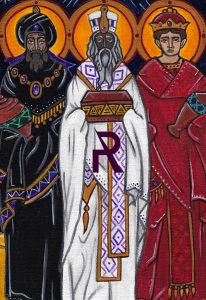 This book explores the history of the Magi from their first literary appearance in the Gospel of Matthew to their earliest depictions in ritual art on sarcophaguses and the walls of catacombs, through to the translated bones of the Three Holy Kings making Cologne one of the most important pilgrimage sites in the medieval world. This popularity leads to the rise of early modern traditions of parades, 'star-singing', begging, and masking. A radical tension is explored between the Magi as both supporting and upending political power structures. On the one hand, they are foreign wise-men legitimising a central authority. Yet they are also powerful, often indigenous, Othered pre-Christian magicians destabilising that authority. This tension is especially apparent in the Three Kings' influence and inspiration throughout colonisation of the so-called "New World".
This book explores the history of the Magi from their first literary appearance in the Gospel of Matthew to their earliest depictions in ritual art on sarcophaguses and the walls of catacombs, through to the translated bones of the Three Holy Kings making Cologne one of the most important pilgrimage sites in the medieval world. This popularity leads to the rise of early modern traditions of parades, 'star-singing', begging, and masking. A radical tension is explored between the Magi as both supporting and upending political power structures. On the one hand, they are foreign wise-men legitimising a central authority. Yet they are also powerful, often indigenous, Othered pre-Christian magicians destabilising that authority. This tension is especially apparent in the Three Kings' influence and inspiration throughout colonisation of the so-called "New World".
Having traced the history of their veneration and mythology, we have context to more fully explore and integrate their appearances in a variety of operations found throughout the grimoiric records of magical handbooks and folk ritual alike: works of travelling, of detection, of conjuration, of dominating supposed superiors, and many more. Along with these operations come a range of prayers and ritual historiolae (appeals to mythic actions or origins, often by imitation), fit for devotional meditation and operative sorcery alike.
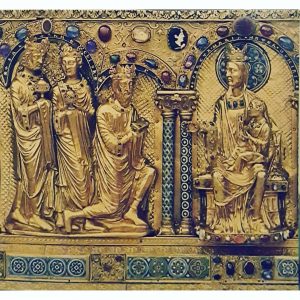
These magical workings are further joined by new gifts from myself, which include recipes and operations from my own practice, as well as personal notes and instructions for blessing materia and constructing talismans. There is particular attention paid to ritual design as well as analysis, and on showing rather than merely telling how to pull useful components for developing personal relationships and magical practices from old texts and customs.
Overall, this book approaches the Magi not simply as a set of three more saints to venerate individually, but as a collective folk necromantic loci by which further relations with ancestral magicians of many creeds may cohere and manifest. It is by the light of a Star in the East, charting our way through darkness, that we may be supported in our travels and travails through life by those dead magicians who have come before us.
 I write this on Epiphany's Eve in the city of Cologne having journeyed here to pay homage to their relics tomorrow. I have been delighted not only to wander around the Cathedral housing the Three Kings' precious crowned skulls prior to formal Epiphany celebrations, but also to find the house blessing associated with the Wise-Men – a chalked C + M + B formula – adorning many a neighourhood door. The Magi have formed a significant locus in my magical and spiritual practice for a good few years now, and continue to inspire me to explore new occult and theological terrain and perspectives. In recent weeks, as I have prepared for this pilgrimage, I have shared some thoughts on ceremonies leading up to Epiphany, and rites one might partake in to honour the Magi on their Feast. I have been delighted to see that other colleagues and friends have been sharing similarly.
I write this on Epiphany's Eve in the city of Cologne having journeyed here to pay homage to their relics tomorrow. I have been delighted not only to wander around the Cathedral housing the Three Kings' precious crowned skulls prior to formal Epiphany celebrations, but also to find the house blessing associated with the Wise-Men – a chalked C + M + B formula – adorning many a neighourhood door. The Magi have formed a significant locus in my magical and spiritual practice for a good few years now, and continue to inspire me to explore new occult and theological terrain and perspectives. In recent weeks, as I have prepared for this pilgrimage, I have shared some thoughts on ceremonies leading up to Epiphany, and rites one might partake in to honour the Magi on their Feast. I have been delighted to see that other colleagues and friends have been sharing similarly.
And so today marks a celebration, but also an offering whose delivery has been the work of many hands. The research that has gone into my Book of the Magi has been informed by the work of many scholarly authors, but perhaps more immediately it has been the labour of my colleague and publisher Dr Jennifer Zahrt at Revelore Press, the incredibly talented hand and eye of my favourite living icon-painter, S. Aldarnay – who has contributed the inspiring portrait of the Magi that we have made a further gift available to early purchasers of this book – and the support and love of my family. Many, many other people deserve ample recognition and praise – which I have tried to provide in the Acknowledgements fronting A Book of the Magi. It is my hope that if you are one of those fellows reading this now, you already understand the assistance you have so kindly gifted me. Thank you.
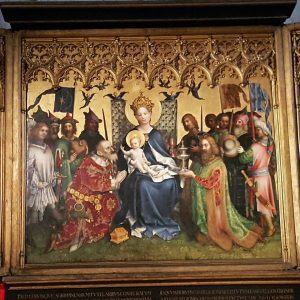 It is my hope that this book prompts, arms, and (in at least some small fashion) inspires its readers to seek further engagement with the Three Holy Kings – to travel like pilgrims following a Star, to offer gifts to that which they celebrate as greater than them, and to continue to devote themselves to celebrating Light in Darkness, to rejoicing through their travails, and communing honestly, respectfully, and powerfully with their magician ancestors who came before them. It is far from a definitive work – rather, it hopefully speaks to the immediacy of magical and spiritual action, of setting foot upon the trail, and of continuing on the journey ahead. I hope it brings myself and others into closer communion with both our sorcerous forebears and our companions along the dusty way, and contributes to the treasury of magic that nourishes, fortifies, and illuminates.
It is my hope that this book prompts, arms, and (in at least some small fashion) inspires its readers to seek further engagement with the Three Holy Kings – to travel like pilgrims following a Star, to offer gifts to that which they celebrate as greater than them, and to continue to devote themselves to celebrating Light in Darkness, to rejoicing through their travails, and communing honestly, respectfully, and powerfully with their magician ancestors who came before them. It is far from a definitive work – rather, it hopefully speaks to the immediacy of magical and spiritual action, of setting foot upon the trail, and of continuing on the journey ahead. I hope it brings myself and others into closer communion with both our sorcerous forebears and our companions along the dusty way, and contributes to the treasury of magic that nourishes, fortifies, and illuminates.
And so, I wish you a blessed, happy and healthy Epiphany. If nothing else, I hope you find time to raise a glass to the Magi and to the Star! To the Infant! To the Mother, and to the Father!
Let The Kings Drink!
